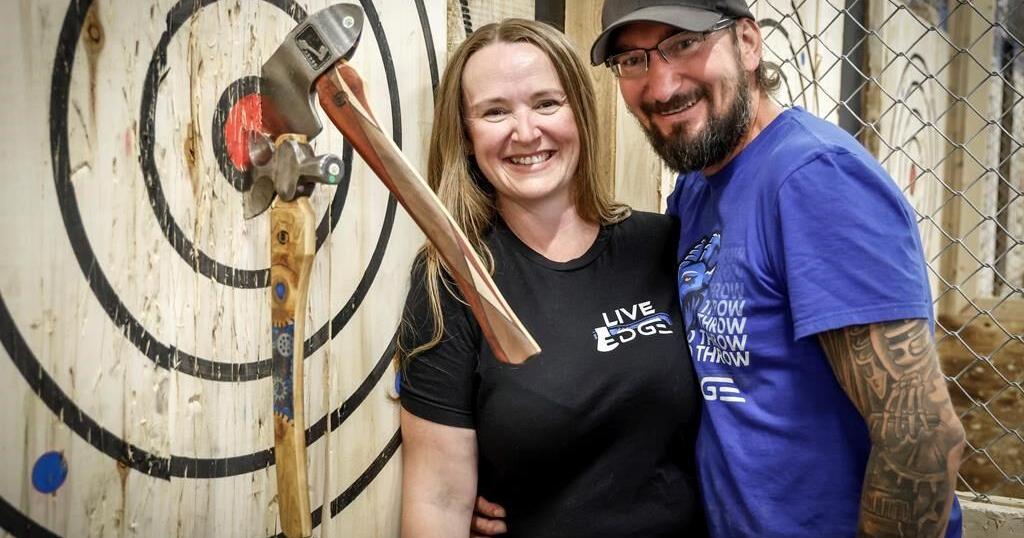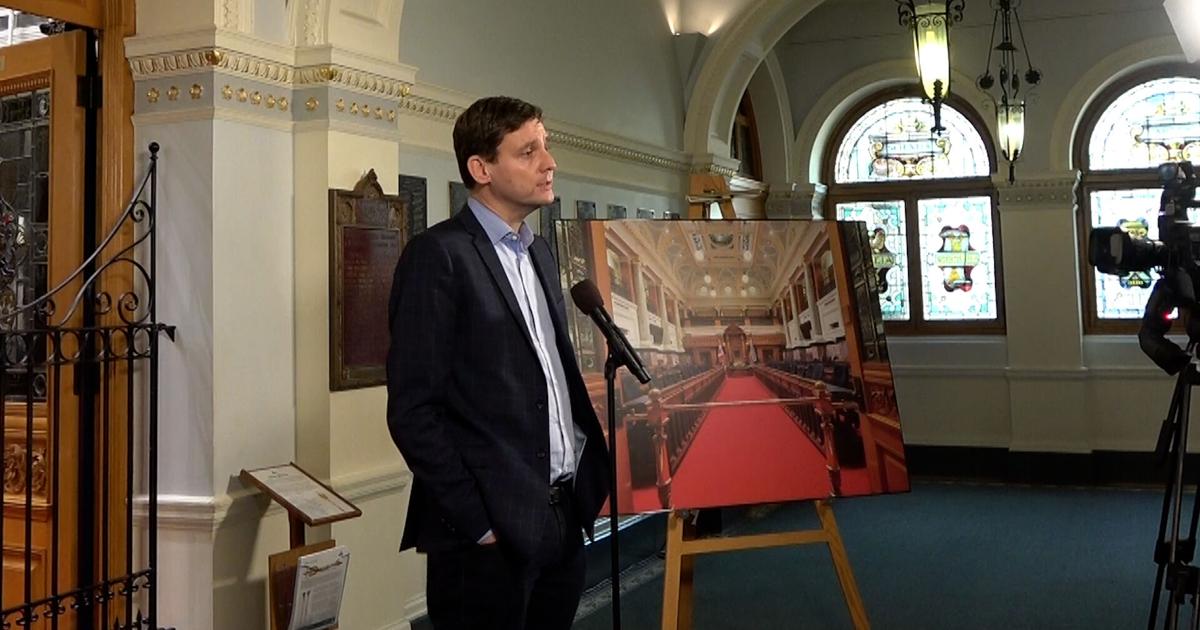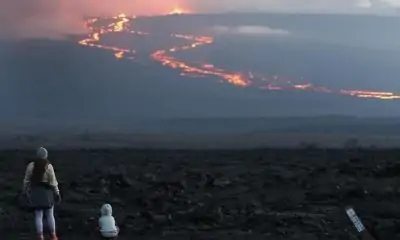CALGARY – Nick Kolomyja reckons axe throwing may have saved his life.
After 30 years as a welder working long hours in heavy construction, he opened an axe and knife-throwing venue in Calgary with his wife last year.
“You work 21 days straight. I never got to see my kids. I was burnt out, worked hard, found this, found a new passion in life and just went for it,” said Kolomyja, 45.
“It’s crazy because I always look back on it a little bit and think axe throwing probably just saved my life.”
Kendra Kolomyja, 42, took archeology at the University of Calgary then did her graduate work in the Netherlands before moving back to teach at Mount Royal University and work in cultural resource management.
So far, she hasn’t found any ancient axe heads.
“I have found a lot of bison bones, arrowheads around here. It would be super cool if I found, like, a fur trade axe. That would be amazing.”
The couple first started throwing axes and knives at a friend’s birthday party and liked it so much they signed up for a league.
They have both qualified, for the sixth time, to compete at the world championships. Next year it’s in Appleton, Wis.
Live Edge Axe Throwing, which the couple opened in November, offers instruction to beginners as well as a spot for more advanced throwers whocompete in weekly leagues with the goal of making it to the worlds.
There are two large targets painted on plywood in each of the five lanes, separated by chain-link fence.
The Kolomyjas each get their own kind of satisfaction from throwing.
“You get that release out of it. If you’ve been having a bad day, and you think, ‘God, I just want to throw something at a wall,’ there it is,” said Nick Kolomyja.
However, putting a picture of a politician or an ex on the target is a no-no to keep things positive.
For Kendra Kolomyja, it’s getting the axe to stick, or sinking the blade into the target.
“It’s actually not as tough as people might think,” she said.
“Sticking it is just so satisfying and cathartic … it’s a Zen thing, where you kind of get into that repetition, over and over. It’s amazing.”
The sport flourished during the COVID-19 pandemic with online and Zoom tournaments. People built targets in their backyards and basements. The Kolomyjas set one up in their garage.
With their new business, the couple said the bills are being paid and the lights are still on.
“It’s an interesting industry where it’s exploding in the last few years,” said Kendra Kolomyja.
“It’s sort of the new bowling at the moment, where people are just discovering that everybody wants to throw an axe … you maybe just didn’t know that you did.”
This report by The Canadian Press was first published Sept. 22, 2024.

























